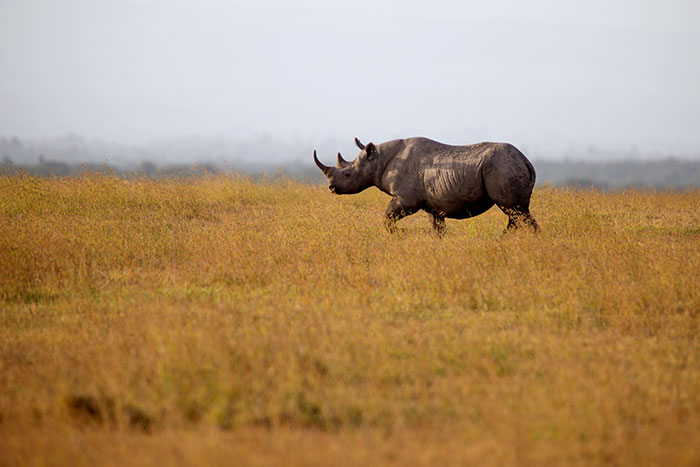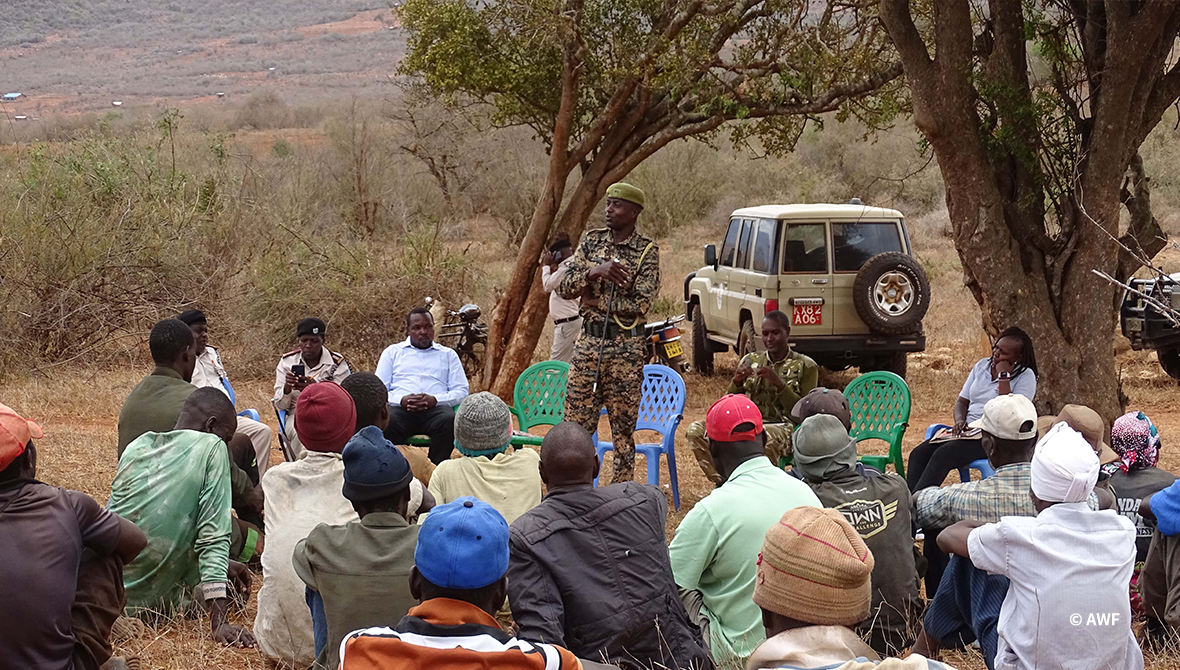World Rhino Day: Collaborative Efforts Drive Rhino Conservation Progress Across Africa

This year's World Rhino Day is an opportunity to highlight one of Africa's iconic symbols—the rhinoceros—while reflecting on conservation progress and planning for the future. Although the number of African rhinos has increased since 2004, the work is far from complete.
Once common across the continent, African rhinos were driven to the brink of extinction by decades of poaching. While overall poaching rates have declined since their peak in 2015, the threat remains significant. Beyond poaching, rhinos face multiple challenges, including habitat loss, fragmentation, limited secure habitats, inadequate incentives for conservation, and the high cost of protection. Fortunately, there is knowledge and tools to take action to conserve healthy rhino populations and their habitats, which can support both local and national economies.
According to the 2024 State of Rhino Report by the International Rhino Foundation, the white rhino population, classified as Near Threatened, was estimated at 17,464. The black rhino population, classified as Critically Endangered, was estimated at 6,421 as of the end of 2023.
The report also shows 586 rhino poaching deaths reported across Africa in 2023; 499 of them occurred in South Africa. This represents about 2.5% of the African rhino population that year, or one rhino killed every 15 hours.
On this year's World Rhino Day, we highlight conservation progress. In Kenya, black rhino populations have rebounded due to collaborative efforts led by the government, the private sector, communities, and non-governmental organizations (NGOs), including the African Wildlife Foundation (AWF).
As ecological engineers, rhinos play a vital role in shaping ecosystems, particularly in grasslands where they maintain healthy habitats benefiting other species. They also disperse plant seeds through their dung and foraging activities. Despite ongoing threats, conservation efforts have been fruitful, with three of the five remaining rhino species, including black and white rhinos, showing population growth. Concerted conservation efforts in Kenya and across key rhino range states, focused on protection and biological management, have also been fruitful.
Philip Muruthi, AWF's chief scientist and a member of Kenya's National Rhino Management Committee, emphasized the importance of rhinos for Africa's ecosystems, tourism, and cultural heritage.
“Rhinos are ecological engineers,” Muruthi said. “Their existence supports other species and helps maintain the health of the ecosystems. Africa cannot afford to lose them.”
Muruthi added, “Rhinos are also important for the socioeconomic benefit they offer to states and local communities. They are among the symbols of Africa.”
Milestones in Rhino Conservation
- Kenya has achieved a remarkable feat in rhino conservation, with its black rhino population reaching 1,004 earlier this year, up from about 380 in 1985. The country now boasts a total rhino population of 1,977, including 971 southern white rhinos and two critically endangered northern white rhinos. This success, driven by the collaborative efforts championed by Kenya Wildlife Service and its key partners like AWF, offers hope for rhino conservation across the continent. Kenya’s national species action and recovery plans backed by requisite policy have been critical in protecting these iconic species—like the Black Rhino Action Plan, targeting a national population of 2,000 by 2037, and the first White Rhino Action Plan developed with AWF support. Kenya has zero tolerance for rhino poaching.
- The African Wildlife Foundation currently supports six rhino populations across four African countries: Kenya's Tsavo West/Ngulia, Ol Pejeta Conservancy, and Lake Nakuru; Tanzania’s Mkomazi National Park; Uganda’s Ziwa Rhino Sanctuary; and Zimbabwe’s Save Valley Conservancy. In Tsavo West Intensive Protection Zone (IPZ), Ngulia Rhino Sanctuary, AWF’s financial contributions have been crucial in covering sanctuary upkeep, fence, and water infrastructure, and equipping rangers for effective rhino monitoring and security. AWF thanks our supporters for these and past rhino conservation efforts, including those in Namibia and South Africa.
- In Tanzania, AWF actively participated in the review of the National Rhino Conservation and Management Plan 2019-2023. As a result of these efforts, the Mkomazi rhino population grew to 41 in the 2022-23 period. AWF also funded critical infrastructure improvements, including enhanced water access, upgraded ranger accommodation, and the installation of a solar-powered borehole. Furthermore, rhino trackers and rangers received training in fence monitoring and maintenance to bolster conservation efforts.
- Uganda's National Rhino Action and Recovery Plan (2018-2028) guides its conservation efforts, including the potential reintroduction of rhinos to the Murchison Falls landscape. Uganda Wildlife Authority (UWA) has been preparing the Ajai Wildlife Reserve by translocating buffalo and kobs. AWF has supported this by conducting community awareness meetings. Ziwa Reserve has bred 26 southern white rhinos since 2005, providing a model for future rewilding projects.
Ongoing Threat of Poaching
Despite Kenya’s conservation successes, poaching remains the greatest threat to rhinos across Africa. Rhino horn continues to fetch high prices in illegal markets, particularly in China and Vietnam, where it is used in traditional medicine. AWF’s Counter Wildlife Trafficking Program combats this by advocating for policies that reduce demand for rhino horns and disrupt trafficking and these illegal markets. We enhance detection, enhance prosecution, and address emerging wildlife crime across Africa.
"Right now, we have urgent goals to stop poaching, enforce the law, end trafficking, and prevent the consumption of rhino horn; then we can sincerely talk about benefitting from rhinos. This is why AWF sees rhino conservation holistically from securing space, ecosystem services, countering poaching and trafficking to accruing ecological and economic benefits from healthy populations," notes Dr. Muruthi.
Communities and the Private Sector’s Role

Community engagement in Tsavo Landscape.
Engaging local communities and the private sector is critical to long-term rhino conservation. In Kenya, private conservancies like Ol Pejeta Conservancy have been instrumental in protecting rhinos. Additionally, communities are increasingly involved, especially as they see direct benefits from conservation efforts.
“There’s great potential for communities to participate in rhino conservation,” says Dr. Muruthi. “Bringing together local communities, governments, and the private sector is key to long-term success.”
AWF supports communities by providing training and equipping leaders and scouts, building key infrastructure including water, and improving livelihoods to ensure they benefit directly from rhino and other conservation engagements.
Long-Term Plans for Rhino Recovery
AWF’s long-term goal is to ensure African countries can independently manage rhino conservation. Between 2020 and 2030, AWF will continue supporting the development and implementation of national rhino recovery and action plans, which are crucial for coordinating efforts, setting priorities, and securing funding.
“Rhino conservation is expensive and requires sustained investment,” adds Dr. Muruthi. “AWF is committed to working with governments, the private sector, communities, and NGOs to design effective, long-term solutions.”
While challenges remain, the progress in rhino conservation is promising. As we celebrate World Rhino Day, it is clear that sustained effort, collaboration, and innovation are essential to securing a future for these iconic creatures. Long live one of Africa’s icons.
>>Read more about the African Wildlife Foundation's rhino conservation efforts across Africa.